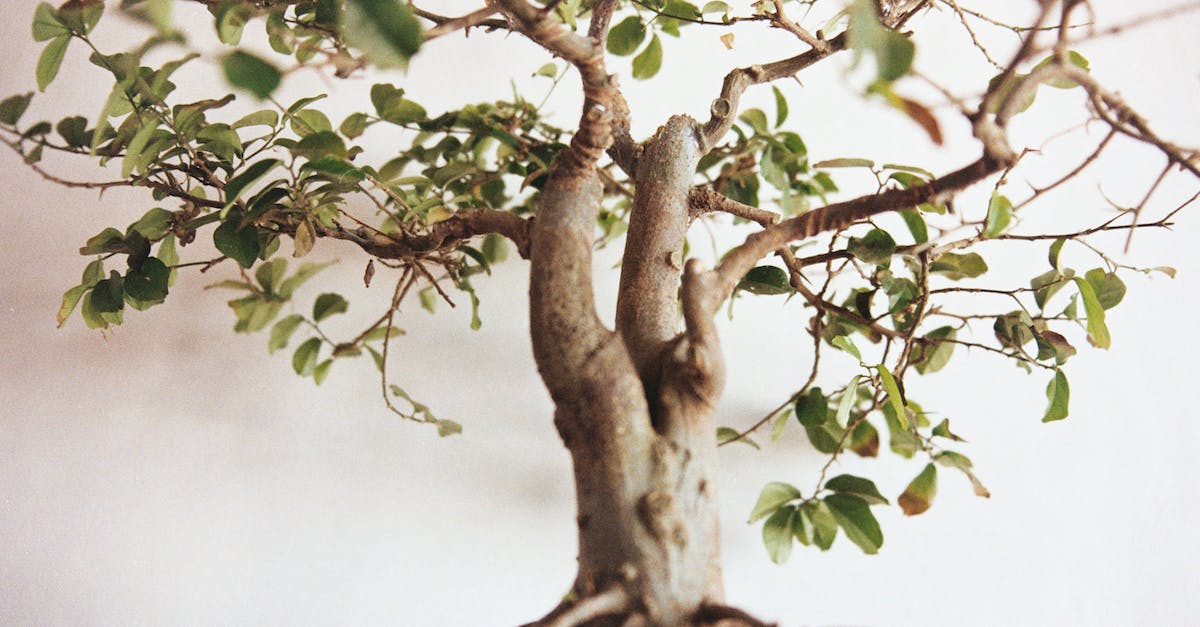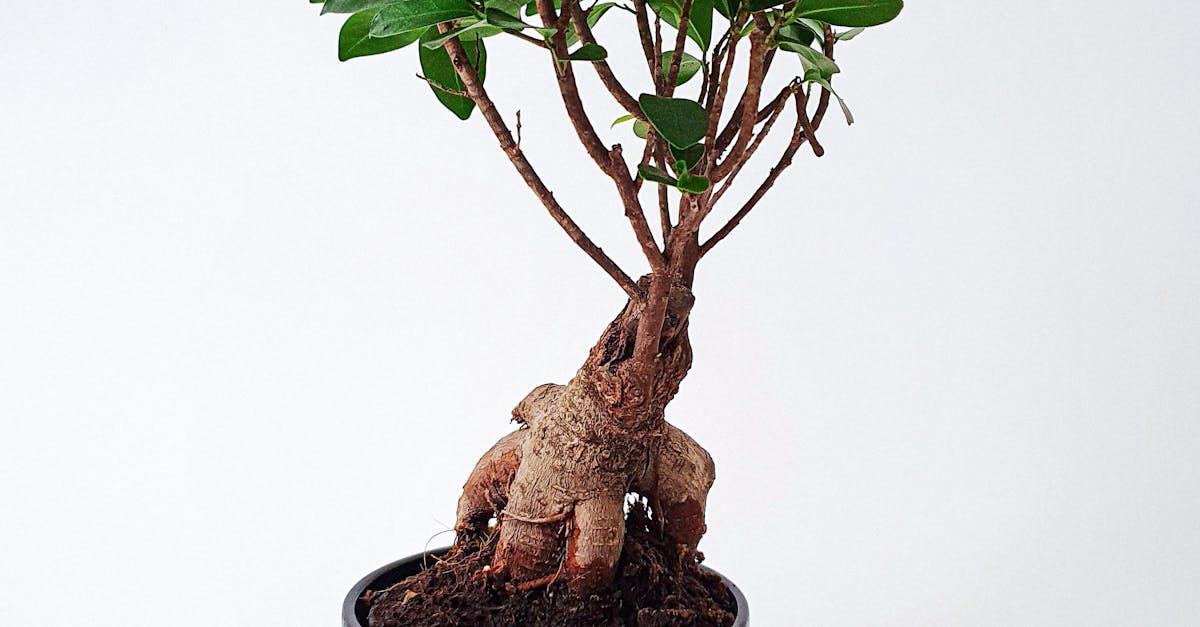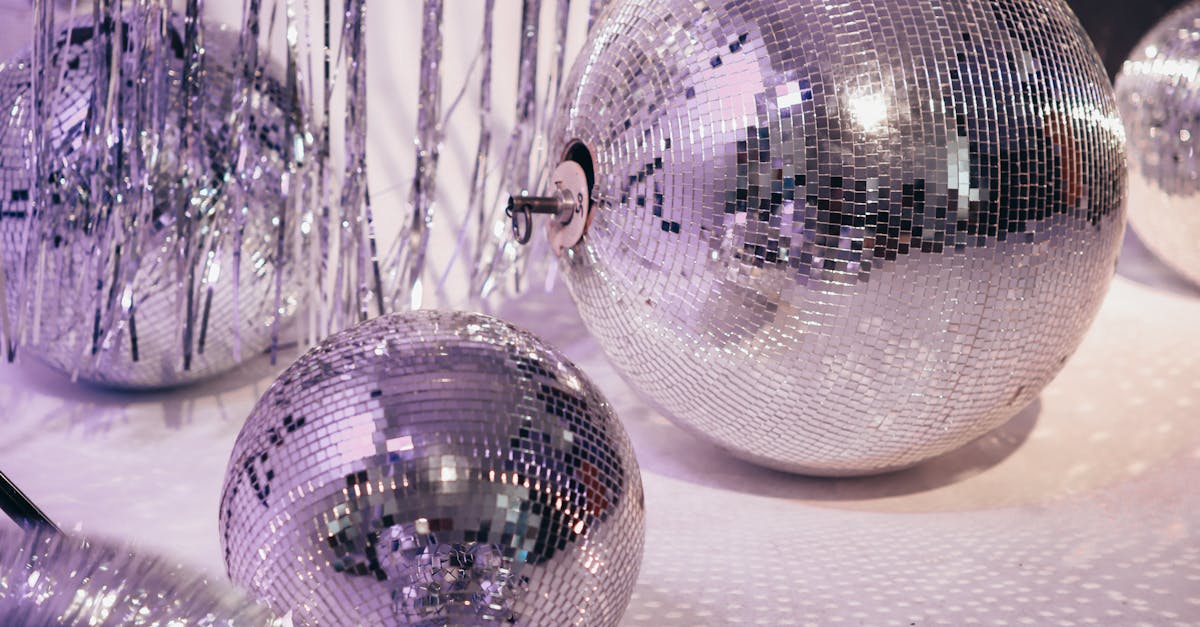The Living Canvas: Shaping Nature’s Art

Sacred Wood: The Journey of a Bonsai Masterpiece
Bonsai, a beautiful fusion of nature and art, has captivated people for centuries. Originating in ancient China, this art form was refined by Japanese artisans, who transformed it into a symbol of longevity, resilience, and harmony. With meticulous care and training, bonsai artists create miniature landscapes that tell stories, evoke emotions, and offer a profound connection to nature.
In this comprehensive guide, we will delve into the enchanting world of bonsai. We will explore the origins, principles, and techniques of this art form, revealing the secrets behind creating and nurturing these extraordinary living masterpieces. From selecting the right tree to mastering pruning and wiring, we will uncover the intricate processes involved in shaping a bonsai. Discover the diverse styles and forms of bonsai, and learn how artists use their creations to convey narratives and express personal visions. We will also provide practical advice on caring for a bonsai, ensuring its health and longevity for generations to come.
1. The Ancient Art of Bonsai
The Ancient Art of Bonsai
Bonsai, the art of cultivating miniature trees in containers, is an ancient practice that originated in China over a thousand years ago. Inspired by the natural beauty of dwarfed trees found in nature, bonsai artists strive to recreate these landscapes in miniature, capturing the essence of nature in a living work of art.
Bonsai is a unique art form that combines horticultural techniques with artistic vision. By carefully controlling the growth and shape of trees, bonsai artists create living sculptures that are both beautiful and evocative. The principles of bonsai emphasize balance, harmony, and the appreciation of nature’s imperfections.
Over the centuries, bonsai has evolved into a highly refined and respected art form, particularly in Japan, where it has become a symbol of longevity, resilience, and peace. Today, bonsai is practiced around the world, with enthusiasts creating stunning miniature landscapes that showcase the diversity and beauty of nature.
Origins in Ancient China
Origins in Ancient China
The origins of bonsai can be traced back to the ancient Chinese practice of penjing, which emerged during the Han Dynasty (206 BCE – 220 CE). Penjing, which literally means “tray landscape,” involved creating miniature landscapes in shallow containers using rocks, water, and plants, including trees. These landscapes were often used as decorative elements in homes and gardens, and they served as a way to bring nature indoors.
Over time, penjing evolved into a more refined art form, with a focus on creating realistic and detailed miniature landscapes. Trees became a central element in penjing, and techniques were developed to dwarf and shape them, creating the illusion of age and maturity. These miniaturized trees, known as “bonsai” in Japanese, eventually became a distinct art form in their own right.
During the Tang Dynasty (618 – 907 CE), bonsai became increasingly popular among the Chinese elite, and it was during this time that many of the fundamental principles and techniques of bonsai were developed. Chinese bonsai artists perfected the use of pruning, wiring, and root pruning to shape and control the growth of trees, and they also developed a deep understanding of the natural growth patterns of different tree species.
Japanese Influence and Refinement
Japanese Influence and Refinement
In the 12th century, bonsai was introduced to Japan by Buddhist monks who had traveled to China. The Japanese were immediately captivated by this art form, and they quickly adopted and refined it, transforming bonsai into a highly sophisticated and symbolic art form.
Japanese bonsai artists brought a new level of artistry and precision to the cultivation of bonsai. They developed new techniques for shaping and pruning trees, and they also began to use a wider variety of tree species, including native Japanese species such as pines, maples, and cherry trees.
Over the centuries, bonsai became deeply ingrained in Japanese culture, and it was often used to decorate temples, palaces, and homes. Bonsai trees were also given as gifts to express friendship, respect, and admiration. The art of bonsai became a way for Japanese people to connect with nature and to express their own personal philosophies and beliefs.
2. Selecting and Training the Ideal Specimen

Selecting and Training the Ideal Specimen
Selecting and training a bonsai tree is a meticulous process that requires patience, skill, and a deep understanding of tree biology. The first step is to choose a suitable tree species. Not all trees are well-suited to bonsai cultivation, so it is important to select a species that is known for its adaptability, resilience, and aesthetic qualities.
Once a tree has been selected, it must be trained to develop the desired shape and form. This is done through a combination of pruning, wiring, and root pruning. Pruning involves removing unwanted branches and leaves to encourage the growth of new shoots in the desired direction. Wiring is used to bend and shape branches, and root pruning helps to control the size and shape of the root system.
Training a bonsai tree is a long-term process that can take many years. However, with patience and care, it is possible to create a beautiful and unique work of art that can be enjoyed for generations to come.
Choosing the Right Species
Choosing the Right Species
The first step in training a bonsai tree is to choose the right species. Not all trees are well-suited to bonsai cultivation, so it is important to select a species that is known for its adaptability, resilience, and aesthetic qualities.
Some of the most popular tree species for bonsai include:
- Japanese black pine (Pinus thunbergii): This is a classic bonsai species that is known for its hardiness, longevity, and beautiful foliage.
- Japanese maple (Acer palmatum): Japanese maples are prized for their colorful foliage, which can range from bright red to deep purple.
- Chinese elm (Ulmus parvifolia): Chinese elms are fast-growing and easy to train, making them a good choice for beginners.
- Ficus (Ficus spp.): Ficus trees are tropical trees that are well-suited to indoor bonsai cultivation.
- Juniper (Juniperus spp.): Junipers are evergreen trees that are known for their dense foliage and gnarled trunks.
When selecting a tree species for bonsai, it is important to consider the following factors:
- Adaptability: The tree should be able to tolerate the conditions in which it will be grown, including the climate and the amount of light and water available.
- Growth patterns: The tree should have a growth pattern that is conducive to bonsai cultivation. This means that it should be slow-growing and have small leaves and branches.
- Aesthetics: The tree should have attractive foliage and branching, and it should be able to develop a pleasing shape and form.
Pruning and Wiring Techniques
Pruning and Wiring Techniques
Pruning and wiring are two essential techniques used to shape and train bonsai trees. Pruning involves removing unwanted branches and leaves, while wiring is used to bend and shape branches.
Pruning
Pruning is used to control the size and shape of a bonsai tree, and to encourage the growth of new shoots in the desired direction. There are several different types of pruning cuts, each with its own specific purpose.
- Thinning cuts: Thinning cuts are used to remove small branches and twigs that are growing too close together. This helps to improve air circulation and light penetration, and it can also help to create a more balanced and open appearance.
- Heading cuts: Heading cuts are used to remove the tips of branches. This encourages the growth of new shoots below the cut, and it can be used to create a more compact and dense tree.
- Root pruning: Root pruning is used to control the size and shape of the root system. This is important for bonsai trees, as the roots need to be in proportion to the size of the tree.
Wiring
Wiring is used to bend and shape branches. This can be done to create a more natural appearance, or to create a specific shape or style. Wiring should be done carefully, as it can damage the branches if it is not done correctly.
When wiring a bonsai tree, it is important to use the correct type of wire. The wire should be thin and flexible enough to bend the branches without damaging them, but it should also be strong enough to hold the branches in place.
Pruning and wiring are essential techniques for shaping and training bonsai trees. With patience and practice, it is possible to create beautiful and unique works of art.
Root Management and Repotting
Root Management and Repotting
Root management and repotting are essential for maintaining the health of a bonsai tree and controlling its growth.
Root pruning
Root pruning is the process of removing some of the roots of a bonsai tree. This is done to encourage the growth of new, finer roots, which will help the tree to absorb water and nutrients more efficiently. Root pruning also helps to control the size of the root system, which is important for bonsai trees, as the roots need to be in proportion to the size of the tree.
Repotting
Repotting is the process of moving a bonsai tree to a new pot. This should be done every few years, or more often if the tree is growing rapidly. Repotting gives the tree fresh soil and nutrients, and it also allows you to check the roots and make any necessary adjustments.
When repotting a bonsai tree, it is important to use a well-draining soil mix. Bonsai trees need to be able to drain excess water quickly, as they are susceptible to root rot.
It is also important to choose the right size pot for your bonsai tree. The pot should be large enough to accommodate the root system, but not so large that the tree becomes unstable.
Root management and repotting are essential for maintaining the health of a bonsai tree. By following these simple tips, you can help your tree to thrive for many years to come.
3. The Living Canvas: Artistic Interpretation
The Living Canvas: Artistic Interpretation
Bonsai is not just a horticultural practice; it is also a form of artistic expression. Bonsai artists use their skills and creativity to transform ordinary trees into living works of art.
Bonsai artists often draw inspiration from nature, creating miniature landscapes that reflect the beauty and diversity of the natural world. They may also use their bonsai trees to express their own personal philosophies and beliefs.
There are many different styles of bonsai, each with its own unique aesthetic. Some of the most popular styles include:
- Formal upright: This is the most traditional style of bonsai, and it is characterized by a single, straight trunk that rises vertically from the pot.
- Informal upright: This style is similar to the formal upright style, but the trunk is allowed to curve or lean slightly.
- Slanting: This style features a trunk that slants to one side.
- Cascade: This style features a trunk that cascades down over the edge of the pot.
- Semi-cascade: This style is similar to the cascade style, but the trunk only cascades down partway over the edge of the pot.
- Literati: This style is characterized by a tall, slender trunk with few branches.
- Forest: This style features a group of trees planted together in a single pot.
Bonsai artists use a variety of techniques to create their works of art. These techniques include pruning, wiring, and root pruning. They also use a variety of materials, such as rocks, sand, and moss, to create a realistic and visually appealing landscape.
Styles and Forms
Styles and Forms
There are many different styles of bonsai, each with its own unique aesthetic. Some of the most popular styles include:
- Formal upright: This is the most traditional style of bonsai, and it is characterized by a single, straight trunk that rises vertically from the pot. The branches are arranged in a symmetrical pattern, and the tree has a balanced and harmonious appearance.
- Informal upright: This style is similar to the formal upright style, but the trunk is allowed to curve or lean slightly. This gives the tree a more natural and relaxed appearance.
- Slanting: This style features a trunk that slants to one side. The branches are arranged in a way that complements the slant of the trunk, and the tree has a dynamic and asymmetrical appearance.
- Cascade: This style features a trunk that cascades down over the edge of the pot. The branches are arranged in a way that follows the flow of the trunk, and the tree has a graceful and elegant appearance.
- Semi-cascade: This style is similar to the cascade style, but the trunk only cascades down partway over the edge of the pot. This gives the tree a more compact and balanced appearance.
- Literati: This style is characterized by a tall, slender trunk with few branches. The branches are often arranged in a sparse and asymmetrical manner, and the tree has a refined and sophisticated appearance.
- Forest: This style features a group of trees planted together in a single pot. The trees are arranged in a way that creates a realistic and visually appealing landscape.
Bonsai artists often use a combination of different styles to create their own unique works of art. For example, they may combine the formal upright style with the cascade style to create a tree that has a strong and upright trunk with cascading branches.
Creating a Narrative
Creating a Narrative
Bonsai artists often use their creations to convey stories, emotions, and connections to nature. They may do this through the choice of tree species, the shape and style of the tree, and the use of accessories such as rocks, sand, and moss.
For example, a bonsai artist may choose to use a gnarled and twisted tree to represent the hardships of life. Or, they may use a delicate and graceful tree to represent the beauty and fragility of nature.
The shape and style of the tree can also be used to convey a story. A tall, upright tree may represent strength and resilience, while a cascading tree may represent grace and elegance.
Accessories can also be used to create a narrative. For example, a rock placed at the base of a tree may represent a mountain, while a piece of moss may represent a forest.
By combining different elements, bonsai artists can create bonsai trees that tell stories, evoke emotions, and connect viewers with nature.
4. Nurturing and Preserving a Bonsai Masterpiece

Nurturing and Preserving a Bonsai Masterpiece
Once you have created a bonsai masterpiece, it is important to provide ongoing care and maintenance to preserve its beauty and health for generations to come.
Watering and Fertilizing
Bonsai trees need to be watered regularly, but it is important to avoid overwatering. The best way to water a bonsai tree is to use a watering can with a fine nozzle. Water the tree slowly and evenly, until the water begins to drain from the drainage holes in the bottom of the pot.
Bonsai trees also need to be fertilized regularly. Use a balanced fertilizer that is specifically designed for bonsai trees. Fertilize the tree according to the instructions on the fertilizer package.
Sunlight and Humidity
Bonsai trees need plenty of sunlight, but they should be protected from direct sunlight during the hottest part of the day. The best place to keep a bonsai tree is in a bright, sunny spot where it will receive indirect sunlight.
Bonsai trees also need high humidity. You can increase the humidity around your bonsai tree by placing it on a tray of pebbles filled with water.
Pest and Disease Management
Bonsai trees are susceptible to a variety of pests and diseases. It is important to inspect your tree regularly for signs of pests or diseases. If you find any pests or diseases, treat them immediately according to the instructions on the pesticide or fungicide package.
Watering and Fertilizing
Watering and Fertilizing
Watering and fertilizing are two of the most important aspects of bonsai care. Watering helps to keep the tree hydrated and healthy, while fertilizing provides the tree with the nutrients it needs to grow and thrive.
Watering
The best way to water a bonsai tree is to use a watering can with a fine nozzle. Water the tree slowly and evenly, until the water begins to drain from the drainage holes in the bottom of the pot. Avoid overwatering, as this can lead to root rot.
The frequency of watering will depend on the type of tree, the size of the pot, and the climate. As a general rule, bonsai trees should be watered when the soil feels dry to the touch.
Fertilizing
Bonsai trees need to be fertilized regularly to provide them with the nutrients they need to grow and thrive. Use a balanced fertilizer that is specifically designed for bonsai trees. Fertilize the tree according to the instructions on the fertilizer package.
The frequency of fertilizing will depend on the type of tree and the climate. As a general rule, bonsai trees should be fertilized every two to four weeks during the growing season.
Sunlight and Humidity
Sunlight and Humidity
Bonsai trees need sunlight and humidity to thrive. The amount of sunlight and humidity that a bonsai tree needs will vary depending on the species of tree.
Sunlight
Most bonsai trees need bright, indirect sunlight. Some trees, such as pines and junipers, can tolerate full sun. Other trees, such as maples and azaleas, prefer partial shade.
If you are not sure how much sunlight your bonsai tree needs, it is best to err on the side of caution and provide it with less sunlight than you think it might need. You can always gradually increase the amount of sunlight that your tree receives if it seems to be doing well.
Humidity
Bonsai trees need high humidity. This is because the small leaves of bonsai trees can easily lose moisture to the air. You can increase the humidity around your bonsai tree by placing it on a tray of pebbles filled with water. You can also mist your tree regularly with a spray bottle.
If you live in a dry climate, you may need to take additional steps to increase the humidity around your bonsai tree. You can do this by using a humidifier or by placing your tree in a closed terrarium.
Pest and Disease Management
Pest and Disease Management
Bonsai trees are susceptible to a variety of pests and diseases. It is important to inspect your tree regularly for signs of pests or diseases. If you find any pests or diseases, treat them immediately according to the instructions on the pesticide or fungicide package.
Common pests
Some of the most common pests that affect bonsai trees include:
- Aphids
- Mealybugs
- Scale insects
- Spider mites
- Whiteflies
Common diseases
Some of the most common diseases that affect bonsai trees include:
- Powdery mildew
- Rust
- Leaf spot
- Root rot
Pest and disease management
The best way to prevent pests and diseases from affecting your bonsai tree is to provide it with proper care. This includes watering, fertilizing, and providing the tree with the right amount of sunlight and humidity.
If you do find pests or diseases on your bonsai tree, it is important to treat them immediately. There are a variety of pesticides and fungicides available that can be used to treat pests and diseases on bonsai trees. Be sure to read and follow the instructions on the pesticide or fungicide package carefully.
5. Bonsai as a Cultural Expression
Bonsai as a Cultural Expression
Bonsai is more than just a horticultural practice; it is also a cultural expression. Bonsai trees are often used to represent nature in miniature, and they can be used to convey a variety of messages and emotions.
Bonsai in Japanese society
Bonsai has a long and rich history in Japanese culture. Bonsai trees were first introduced to Japan from China in the 6th century, and they quickly became popular among the Japanese elite. Bonsai trees were often used to decorate temples and palaces, and they were also given as gifts to express friendship and respect.
Over the centuries, bonsai has become an integral part of Japanese culture. Bonsai trees are often used to represent the changing seasons, and they are also used to teach lessons about patience, perseverance, and harmony with nature.
Bonsai’s global influence
Bonsai has become increasingly popular around the world in recent years. Bonsai trees are now grown and enjoyed by people from all walks of life, and there are bonsai clubs and societies in every major city.
The global popularity of bonsai is due in part to its beauty and its ability to convey a variety of messages and emotions. Bonsai trees can be used to represent nature, to teach lessons about life, or simply to provide a sense of peace and tranquility.
Symbolism and Meaning
Symbolism and Meaning
Bonsai trees are often associated with a variety of symbolic meanings, including longevity, resilience, and harmony.
Longevity
Bonsai trees are often seen as a symbol of longevity because they can live for hundreds of years. This is due in part to the fact that bonsai trees are carefully pruned and trained to remain small and compact. As a result, they are able to withstand the elements and survive for many years.
Resilience
Bonsai trees are also seen as a symbol of resilience because they are able to thrive in even the most challenging conditions. Bonsai trees are often grown in small pots with limited soil and water. Despite these challenges, they are able to continue to grow and thrive.
Harmony
Bonsai trees are also seen as a symbol of harmony because they represent the balance between nature and humanity. Bonsai trees are created by humans, but they are also living works of art that are inspired by nature. As a result, bonsai trees represent the harmonious relationship between humans and the natural world.
Bonsai Exhibitions and Competitions
Bonsai Exhibitions and Competitions
Bonsai exhibitions and competitions are a great way to witness the artistry and skill of master bonsai creators. These events are held all over the world, and they attract bonsai enthusiasts from all walks of life.
At a bonsai exhibition, you will see a variety of bonsai trees, from small mame bonsai to large display bonsai. You will also see a variety of different styles of bonsai, including traditional upright forms, cascading forms, and literati forms.
Bonsai competitions are a great way to see the best of the best. Bonsai trees are judged on their overall appearance, their health, and their technical execution. The winners of bonsai competitions are often awarded prizes, and their trees are often featured in bonsai magazines and books.
If you are interested in bonsai, I encourage you to attend a bonsai exhibition or competition. These events are a great way to learn more about bonsai, to see the work of master bonsai creators, and to get inspired to create your own bonsai trees.
Bonsai as a Global Phenomenon
Bonsai as a Global Phenomenon
Bonsai has become increasingly popular around the world in recent years. Bonsai trees are now grown and enjoyed by people from all walks of life, and there are bonsai clubs and societies in every major city.
The global popularity of bonsai is due in part to its beauty and its ability to convey a variety of messages and emotions. Bonsai trees can be used to represent nature, to teach lessons about life, or simply to provide a sense of peace and tranquility.
Bonsai has also become popular as a form of art. Bonsai artists use their skills and creativity to create miniature landscapes that are both beautiful and evocative. Bonsai exhibitions and competitions are held all over the world, and bonsai trees are often featured in museums and galleries.
The global popularity of bonsai has also led to the development of a number of new bonsai styles and techniques. Bonsai artists are now experimenting with new tree species and new ways to train and shape trees. As a result, the art of bonsai is constantly evolving and growing.
What is the best way to water a bonsai tree?
The best way to water a bonsai tree is to use a watering can with a fine nozzle. Water the tree slowly and evenly, until the water begins to drain from the drainage holes in the bottom of the pot. Avoid overwatering, as this can lead to root rot.
How often should I fertilize my bonsai tree?
Bonsai trees should be fertilized regularly to provide them with the nutrients they need to grow and thrive. Use a balanced fertilizer that is specifically designed for bonsai trees. Fertilize the tree according to the instructions on the fertilizer package.
How much sunlight does a bonsai tree need?
Most bonsai trees need bright, indirect sunlight. Some trees, such as pines and junipers, can tolerate full sun. Other trees, such as maples and azaleas, prefer partial shade.
What is the best way to prevent pests and diseases from affecting my bonsai tree?
The best way to prevent pests and diseases from affecting your bonsai tree is to provide it with proper care. This includes watering, fertilizing, and providing the tree with the right amount of sunlight and humidity.



